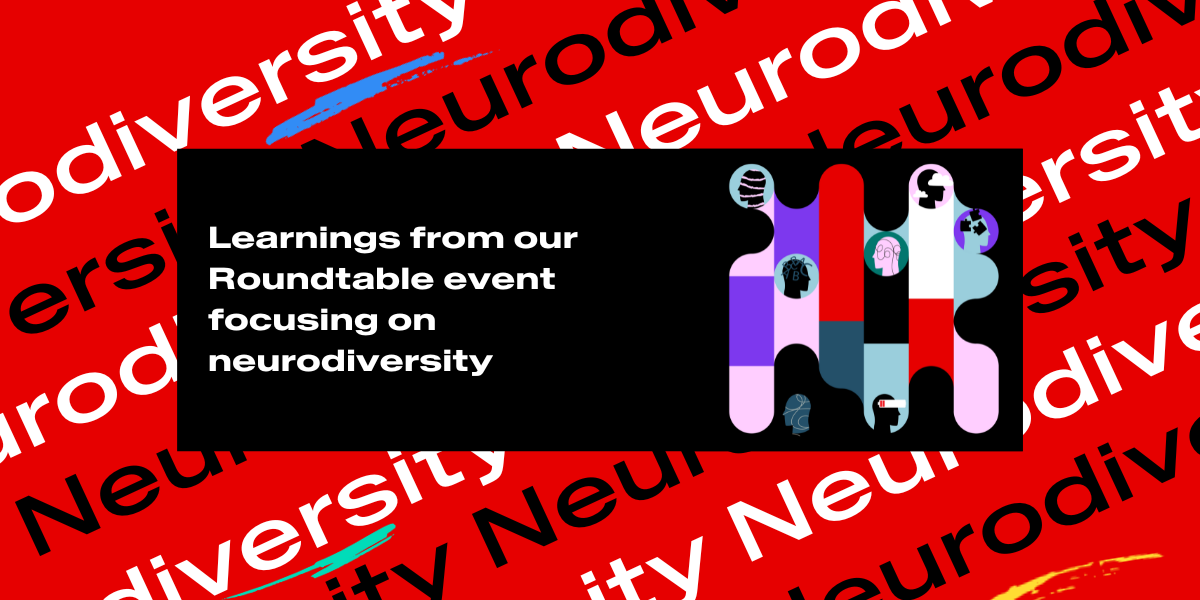Celebrating Neurodiversity Pride Day

by Sian Pasco | Published on June 20th, 2025
Learnings from our Roundtable event focusing on neurodiversity
On Monday 16th June, we celebrated Neurodiversity Pride Day, by hosting a roundtable event with our partners at Sapia.ai. We were joined by people from a huge variety of organisations from Legal and General and Tesco to NCA and – all focussed and committed to improving experiences for candidates and employees of all neurotypes. We heard some incredible stories about strides employers are making, their aspirations, and the support they need to create more inclusive workplaces for neurodivergent talent.
This is a cause we are deeply committed to. In March, we launched Neurodiversity Centre of Excellence, Neuroverse: Powered by Havas. This is a global practice committed to supporting brands, businesses and neurodivergent people to create better, more neuroinclusive candidate, employee and learning experiences.
So what did we hear?
Progress over the years
Kate, Head of People Science at Sapia.ai took us on a journey through candidate selection processes for neurodivergent early talent. While there’s undeniably work to be done, it’s fair to say we’re making progress. In 2005, neurodivergent individuals were often given minor procedural adjustments and extra time on tests. Disclosure of a diagnosis was encouraged, but the stigma made it challenging. Fast forward ten years, and we were starting to see the emergence of Universal Design Thinking. Early adopters in sectors like finance, consulting and tech began creating their own Neurodiversity CoEs; sharing interview questions in advance to alleviate some challenges faced by neurodiverse candidates.
Thankfully, since 2020, the approach has shifted from neurodiverse candidates needing to ask for help to employers proactively offering support options. We’re also seeing the subject of neurodiversity and its impact in the workplace in more academic and business focussed research – research that will enable us all to create increasingly human-centric assessment methods.
Designing for difference
Havas People spoke about the need to be meaningful to all in our communications and that to be successful brands must bridge the expectation gap. 48% of neurodivergent candidates strongly disagreed that recruitment processes were fair to neurodivergent candidates and 63% said they need to mask their neurodivergence to fit into to neurotypical cultures. So, what can we do to make this community feel more welcome and able to succeed? Firstly consider neuro-inclusion at every step of the talent journey. From the moment a candidate visits your website, they should understand your commitment to neuro-inclusion and how you can support them to bring their best. Provide tailored and varied methods of support (one size does not fit all); and don’t be afraid of being literal when you create comms about the application and assessment processes. By embracing technology in the right way, building for difference, providing easy access for accommodations, you raise the bar for all – including your neurodivergent talent pool.
Addressing accessibility gaps
While employers strive to ensure their websites meet AA accessibility standards, scoring 90% or higher, candidates often face accessibility issues when navigating Applicant Tracking Systems (ATS), which typically score around 20%. It’s crucial to bridge this gap to ensure you don’t lose your candidates in an ATS black hole.
Leveraging AI for inclusivity
With 1 in 5 people globally now identifying as neurodivergent, it’s impractical for human recruiters to provide individualized assessment pathways for every applicant (although we’d argue providing training to enable them to meet the needs of all neurotypes is critical). However, AI can be your neuro-inclusive friend if used in the right way – helping by removing time limits and social pressures during initial interviews, allowing candidates to respond without verbal cues. The most powerful path for inclusivity is combining the skills of talented and trained recruiters with the power of AI – scrutinizing algorithmic outcomes and prioritize individualization over automated efficiency.
Measuring impact
Action starts with investment – in both time and money. And, to build a compelling business case for change, we need to demonstrate business need and effectiveness in the outcome. While most organizations have high-level demographic data, it’s vital to delve deeper into individual teams to assess the real impact of inclusion efforts. Combining this data with metrics from partnerships supporting neurodiverse applications can provide a more comprehensive view.
We were excited to see both the progress we’ve collectively made and the opportunities for the future for neurodivergent individuals. As we continue to drive this agenda forward, it’s crucial to maintain clarity, measure impact effectively, and ensure that our efforts lead to meaningful change. By fostering an environment where neurodivergent talent can thrive, we not only enhance our organizations but also contribute to a more inclusive society.
Together, let’s champion neurodiversity and build workplaces where everyone can succeed.
👉 Talk to us about how Neuroverse: Powered by Havas can help your organisation and support your team in making inclusion real.
